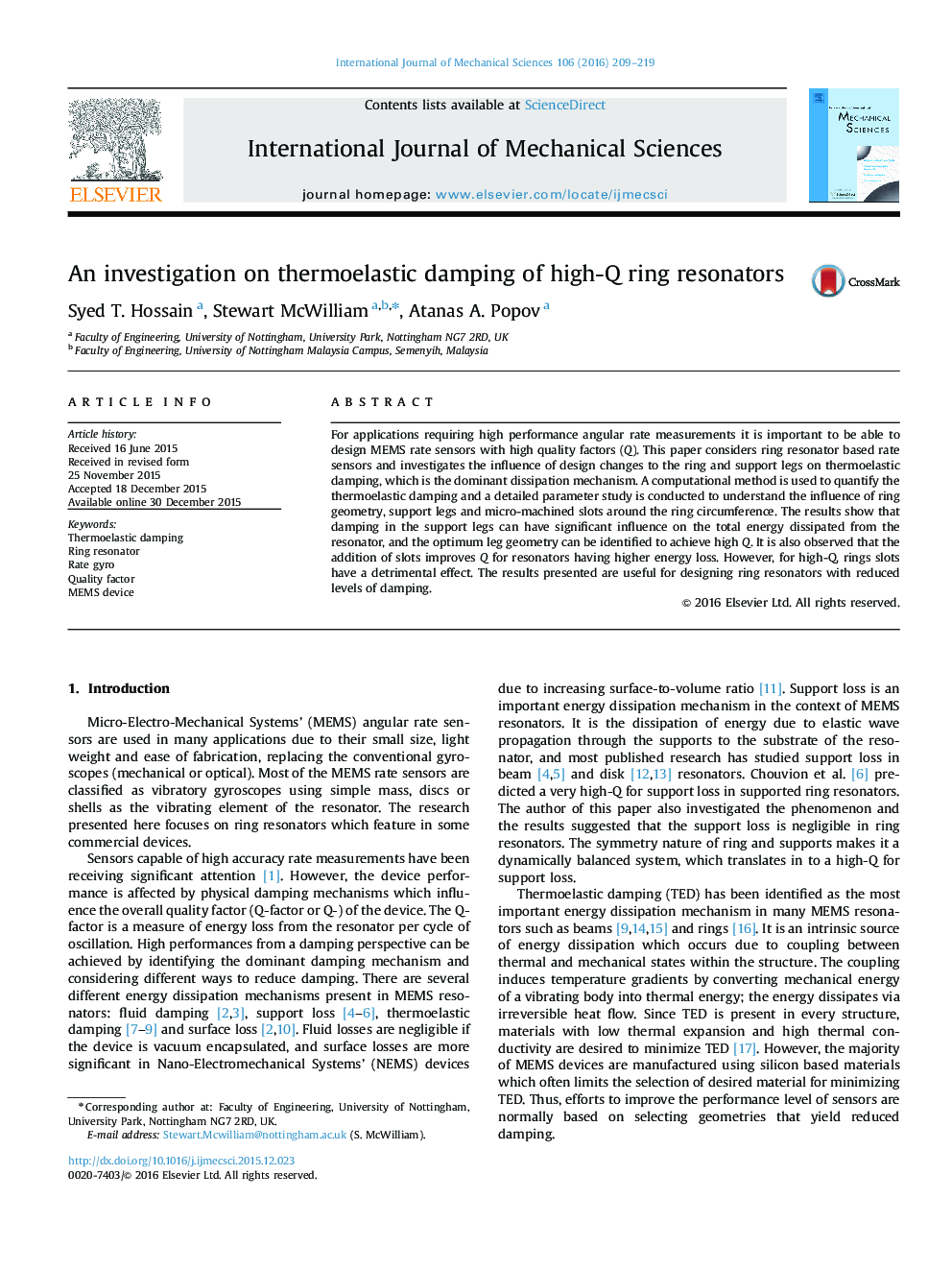| Article ID | Journal | Published Year | Pages | File Type |
|---|---|---|---|---|
| 7174186 | International Journal of Mechanical Sciences | 2016 | 11 Pages |
Abstract
For applications requiring high performance angular rate measurements it is important to be able to design MEMS rate sensors with high quality factors (Q). This paper considers ring resonator based rate sensors and investigates the influence of design changes to the ring and support legs on thermoelastic damping, which is the dominant dissipation mechanism. A computational method is used to quantify the thermoelastic damping and a detailed parameter study is conducted to understand the influence of ring geometry, support legs and micro-machined slots around the ring circumference. The results show that damping in the support legs can have significant influence on the total energy dissipated from the resonator, and the optimum leg geometry can be identified to achieve high Q. It is also observed that the addition of slots improves Q for resonators having higher energy loss. However, for high-Q, rings slots have a detrimental effect. The results presented are useful for designing ring resonators with reduced levels of damping.
Related Topics
Physical Sciences and Engineering
Engineering
Mechanical Engineering
Authors
Syed T. Hossain, Stewart McWilliam, Atanas A. Popov,
